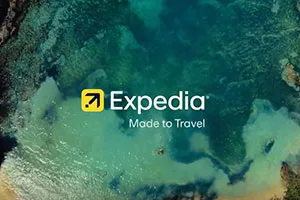Ningaloo Reef, situated off Australia’s west coast about 1200 km north of Perth, is the country’s largest fringing coral reef. Stretching 260 km, it is unique among large reefs for its proximity to land. Traveling to Ningaloo Reef from Perth takes approximately two hours by flight or two days by car.
Aboriginal Significance
The Nyinggulu (Ningaloo) Coast is culturally significant to Aboriginal people, who have an ongoing connection to the area spanning between 30,000 to 60,000 years before present. The word “Nyinggulu” was recorded in the 1800’s and means deep water. Other suggested meanings include promontory.
Rich Biodiversity of Ningaloo Reef
Ningaloo Reef (Nyinggulu) is home to 200 species of hard corals and 50 species of soft corals, hosting over 520 species of fish. Its proximity to the shore makes it highly accessible for divers and snorkelers. This reef is renowned for its whale sharks, manta rays, humpback whales, dugongs, turtles, potato cod, and numerous other fish species.
The shallow lagoon protected by the reef, averaging 2-4 meters deep, is teeming with marine life and offers numerous snorkeling sites accessible in various ways, including dive boats, catamarans, sea kayaks, and scenic flights.

The Ningaloo Marine Park extends for 260 kilometers from Bundegi Reef near Exmouth to Amherst Point near Coral Bay, covering nearly 20 kilometers seaward and encompassing about 5,000 square kilometers of ocean.
Whale sharks, the largest fish species in the world, feed on the reef from mid-March to July, attracted by the mass coral spawning. The reef’s biodiversity also includes a rich variety of corals and marine life. During the winter, it serves as a migratory route for dolphins, dugongs, manta rays, and humpback whales. The reef’s beaches are crucial for the breeding of loggerhead, green, and hawksbill turtles, which rely on the reef for nesting and food.
Humpback whales frequent Ningaloo Reef from June to November, migrating through the Marine Park twice a year. They give birth in the deeper offshore waters, and the area witnesses blue, sperm, minke, Bryde’s, southern right, and killer whales, along with common sightings of dolphins.
In 2006, Australian Institute of Marine Science researchers discovered potentially new sponge species in the park’s deeper waters.
The reef supports a variety of turtle species, which hatch in late January and February. Visitors can observe this natural phenomenon on special guided eco-tours.

Cape Range National Park
Offshore, visitors can explore Cape Range National Park by four-wheel drive, discovering red rock canyons and gorges.

Protecting the Nyinggulu/Ningaloo Reef
Nyinggulu/Ningaloo is sadly not exempt from the potential ravages of modern industrial development. The Exmouth Gulf is a stronghold for many threatened marine species, but its future is in danger.
At the time of writing (April 2024), “International industrial corporation K+S wants to build a major salt production facility on the eastern side of Exmouth Gulf, over an undeveloped, nationally listed wetland. The industrial saltworks would cover a massive area – the size of nearly 12,000 Melbourne Cricket Ground football ovals – in a high conservation value and intact environment.
Gascoyne Gateway Ltd is proposing an industrial port at beautiful Qualing Pool in the Gulf, 10km south of Exmouth. A huge rock causeway and pylon wharf structure around 1km long would be constructed, with dredging of the seabed (more than one million cubic metres), impacting or destroying precious marine habitat.” (source Protect Ningaloo)
Protect Ningaloo is a grassroots initiative of everyday people who are inspired by one of the world’s last great natural places, and want to protect it. If you want to help protect the Exmouth Gulf and Ningaloo check out their website Protect Ningaloo.
“A lot of us have shared some beautiful memories up there. It’s a sacred place that has been thriving way before we came along. The least we could do is work together to protect it.” – Koi Child



